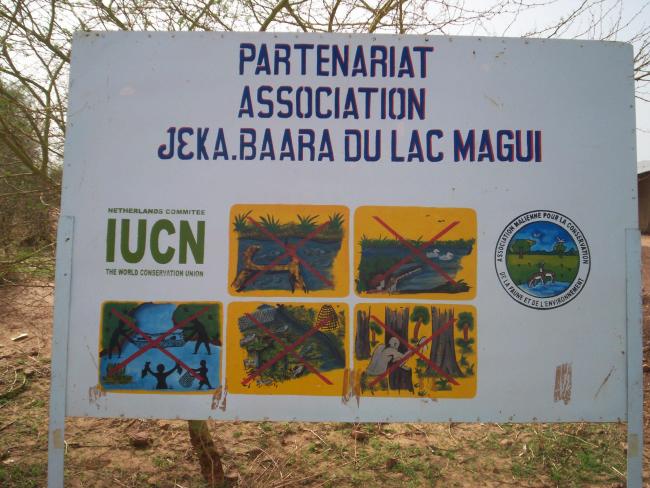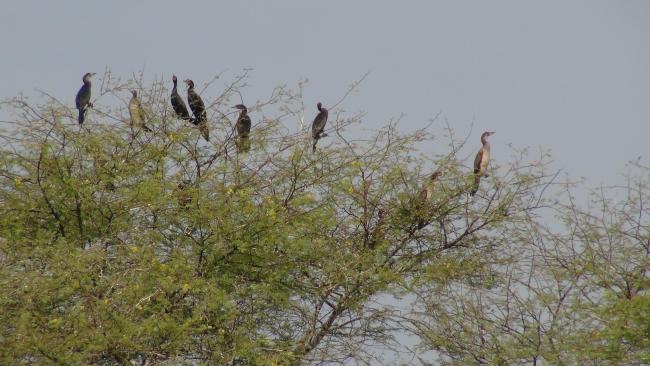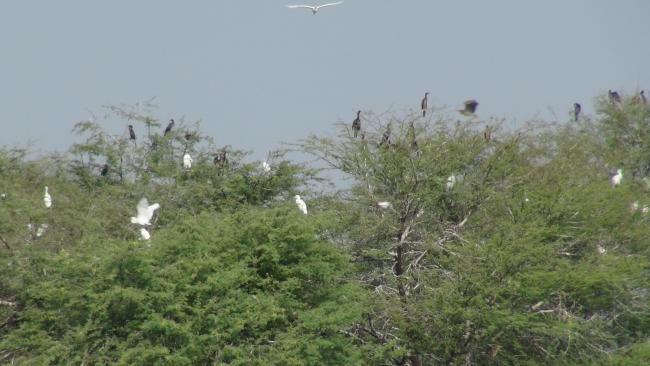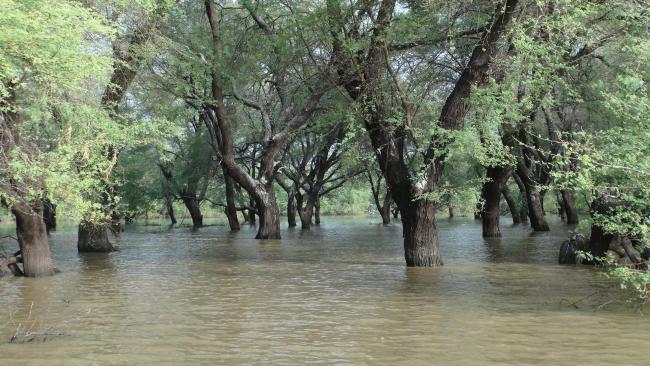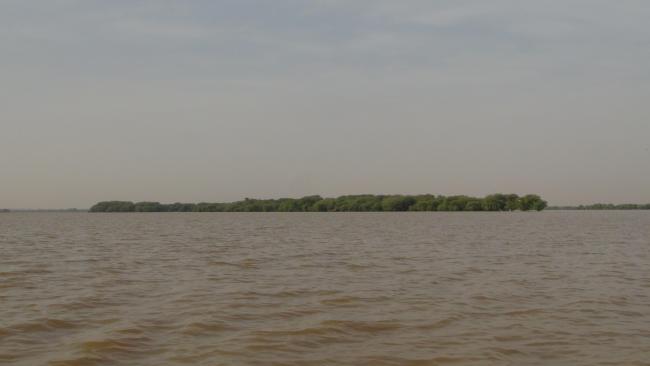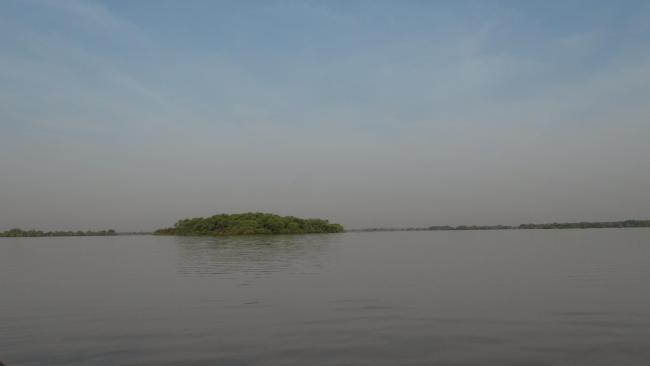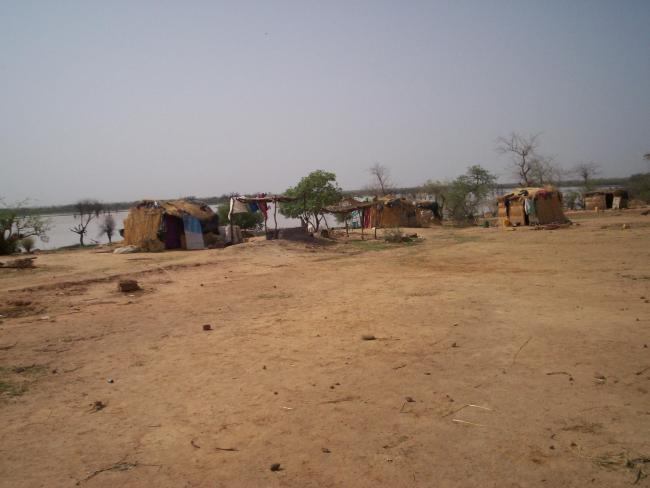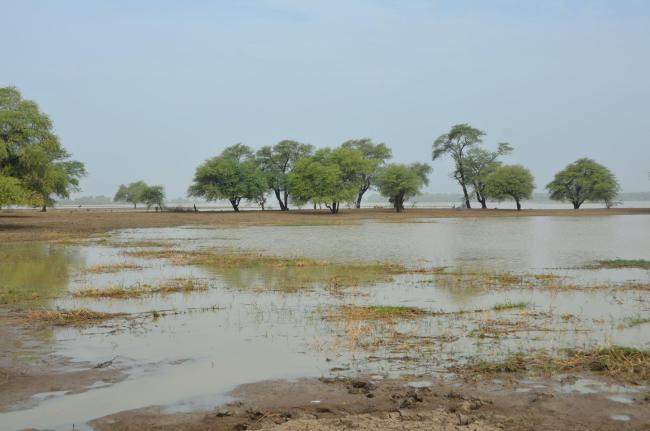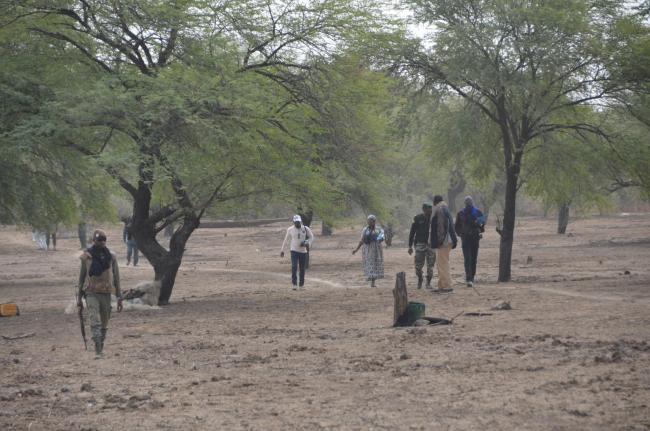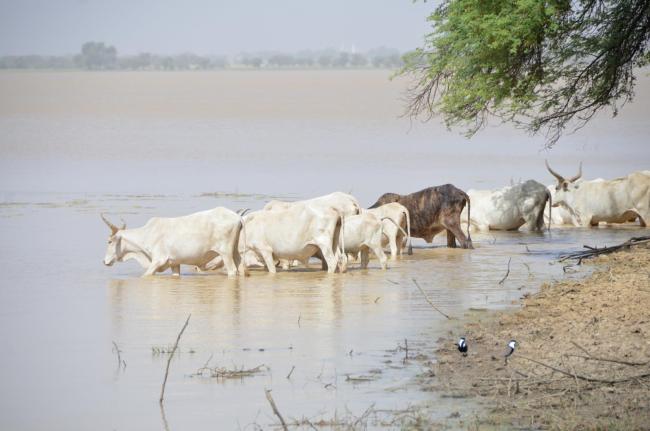Lac Magui
Lac Magui
- Pays:
- Mali
- Numéro du site:
- 2126
- Superficie:
- 24,740.0 ha
- Date d'inscription:
- 22-03-2013
- Coordonnées:
- 14°43'51"N 11°04'09"W
Carousel
CarouselLe matériel présenté sur ce site web, et en particulier les cartes et l’information territoriale, est tel qu’il apparaît dans les données disponibles et n’implique en aucune manière l’expression d’une opinion quelconque de la part du Secrétariat de la Convention de Ramsar concernant le statut juridique de tout pays, territoire, ville ou zone, ou de ses autorités, ou concernant la délimitation de ses frontières ou limites.
Lake Magui is a significant depression within the Térékolé-Kolimbiné basin, fed by the Térékolé, Djéli Mahé and Kolimbiné rivers. This entire basin system sustains the Lake. The vegetation surrounding the lake is heavily degraded, and dominated by thorny species. The landscape features savannah shrubland and sparse inland vegetation, both of which have been severely impacted by human activities. Despite environmental pressures, savannah trees persist along the lake. The site hosts waterbird species, including the dunlin (Calidris alpina), golden-breasted jacana (Actophilornis africanus) and whistling plover (Charadrius melodus). While large wildlife populations have declined due to climatic variations and intense human pressures, the Site remains an important stopover for birds migrating to the Inner Niger Delta. Over the years, population growth, unsustainable agricultural, fishing, hunting and pastoral practices have significantly disrupted the area’s ecological balance. Droughts have reduced plant productivity and water flow into the lake. Additionally, communities seeking fertile wetlands have extensively exploited lowlands, streambeds and temporary marshes, further exacerbating environmental degradation.
- Site Ramsar - TKLM
- ML2126RIS_2503_fr.pdf
- ML2126RISformer_191017.pdf
- ML2126map.pdf
